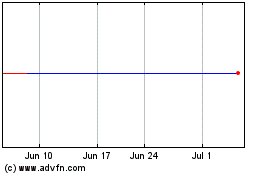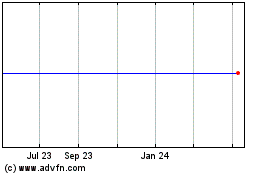By James R. Hagerty
After the Soviet Union launched its Sputnik satellite in 1957,
American scientists were under the gun to top that stunning feat.
Harold Rosen, an electrical engineer at Hughes Aircraft Co.,
proposed small, spinning satellites that could relay telephone
calls and TV signals around the world.
Many of his colleagues dismissed the idea as impractical. Dr.
Rosen struggled for years to win funding for his project. "This was
not the most auspicious time to propose a commercial space
program," he later wrote. "The most vivid impression most people
then had of space-related activities was of rockets blowing up at
Cape Canaveral."
In 1963, after myriad delays and technical problems, his Syncom
satellite was finally launched into orbit. President Kennedy tried
it out by making a call to Nigerian Prime Minister Abubakar Tafawa
Balewa. The next year the Syncom satellite system relayed live TV
coverage of the Tokyo Summer Olympics to the U.S.
Dr. Rosen went on to direct development of more than 150
satellites. Among his many awards was the National Medal of
Technology and Innovation in 1985. In his late 80s, he was still
fit enough for gymnastics, including swinging from one steel ring
to the next at Santa Monica Beach.
Dr. Rosen died Jan. 30 at his home in the Pacific Palisades area
of Los Angeles. He was 90 years old and had suffered a minor stroke
in 2015.
Harold Alvin Rosen was born March 20, 1926, in New Orleans. His
father was a dentist. When Harold was a teenager, his parents
divorced, and his mother went to work as a secretary to support her
three children. Young Harold built a ham radio as a teenager and
graduated from high school at 15.
He then studied electrical engineering at Tulane University but
paused his studies to join the Navy and work with radio
communications and radar during World War II. After his Navy
service, he completed his degree at Tulane and was unsure whether
to continue his studies at Harvard University or the California
Institute of Technology. A Life magazine story about beach parties
in Southern California persuaded him to head for Caltech, where he
earned a doctorate in electrical engineering in 1951.
During and after his Caltech studies he worked at Raytheon Co.,
gaining experience in the electronics used to guide antiaircraft
missiles. In 1956, he joined Hughes Aircraft, founded by the
reclusive tycoon Howard Hughes.
Competing against Bell Labs and others for supremacy in
satellites, Dr. Rosen wanted a geostationary system, in which
satellites 22,300 miles above the Earth would move in sync with the
spinning planet. That meant antennas on Earth could always point in
one direction, eliminating the need for complex tracking systems.
Other scientists believed the satellites needed for a geostationary
system would be unreliable and too heavy to launch.
"I considered it me against the world," he later told the Los
Angeles Times.
Dr. Rosen counted on his knowledge of electronics and missile
guidance. He and his colleagues came up with a cylindrical
satellite weighing only about 55 pounds. The Syncom satellite would
spin in space, making it easier to stabilize -- similar to the way
a quarterback throws a spiral to avoid wobbles.
When Hughes hesitated to fund the project, Dr. Rosen discussed
it with his former employers at Raytheon. To avoid losing Dr. Rosen
and his team, Hughes decided to back Dr. Rosen's concept. The
National Aeronautics and Space Administration contracted to buy
three of the satellites and launched them.
The first Syncom launch, in February 1963, failed when a rocket
malfunctioned. Six months later, a second launch succeeded. Hughes
was on its way to becoming a powerhouse in the nascent
commercial-satellite industry, greatly expanding the scope for
international telephone calls and data transmission previously
handled mainly by copper cables. One result: national same-day
distribution of The Wall Street Journal via satellite transmission
to regional printing plants.
Dr. Rosen later helped design much larger, more complex
satellites, powerful enough to reach small dishes on Earth,
including those bringing hundreds of TV channels to individual
homes. In the mid-1980s, he and colleagues worked out ways for
astronauts on the Space Shuttle to repair satellites in orbit.
"Harold was the brains behind a lot of what we did," said Steven
Dorfman, a former president of the Hughes telecommunications and
space business.
Dr. Rosen was in Sri Lanka in 1990 when his first grandchild was
born. Satellites made it easily affordable for his son Rocky to fax
a picture of her to him, his family recalled.
After retiring from Hughes in 1993, Dr. Rosen went into business
with his brother, Ben Rosen, a venture capitalist who helped found
Compaq Computer Corp. Their Rosen Motors developed a
hybrid-electric powertrain for cars, promising virtually no
emissions, but auto makers declined to embrace the technology. "It
was a technical success and a commercial failure," Ben Rosen
said.
In recent years, Harold Rosen consulted for Boeing Co. and
conducted research in areas including spacecraft, gravitational
waves, synthetic fuels and climate engineering. He exercised
regularly on Santa Monica beach. He also enjoyed crossword puzzles
and bloody marys -- sometimes at the same time.
Dr. Rosen is survived by his wife of 32 years, Deborah
Castleman, a satellite-systems engineer, as well his brother, two
sons and three grandchildren. His first wife, Rosetta Hirschfeld
Rosen, died in 1969.
(END) Dow Jones Newswires
February 10, 2017 10:14 ET (15:14 GMT)
Copyright (c) 2017 Dow Jones & Company, Inc.
Raytheon (NYSE:RTN)
Historical Stock Chart
From Mar 2024 to Apr 2024

Raytheon (NYSE:RTN)
Historical Stock Chart
From Apr 2023 to Apr 2024
